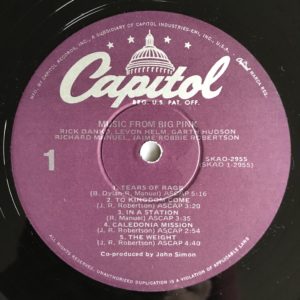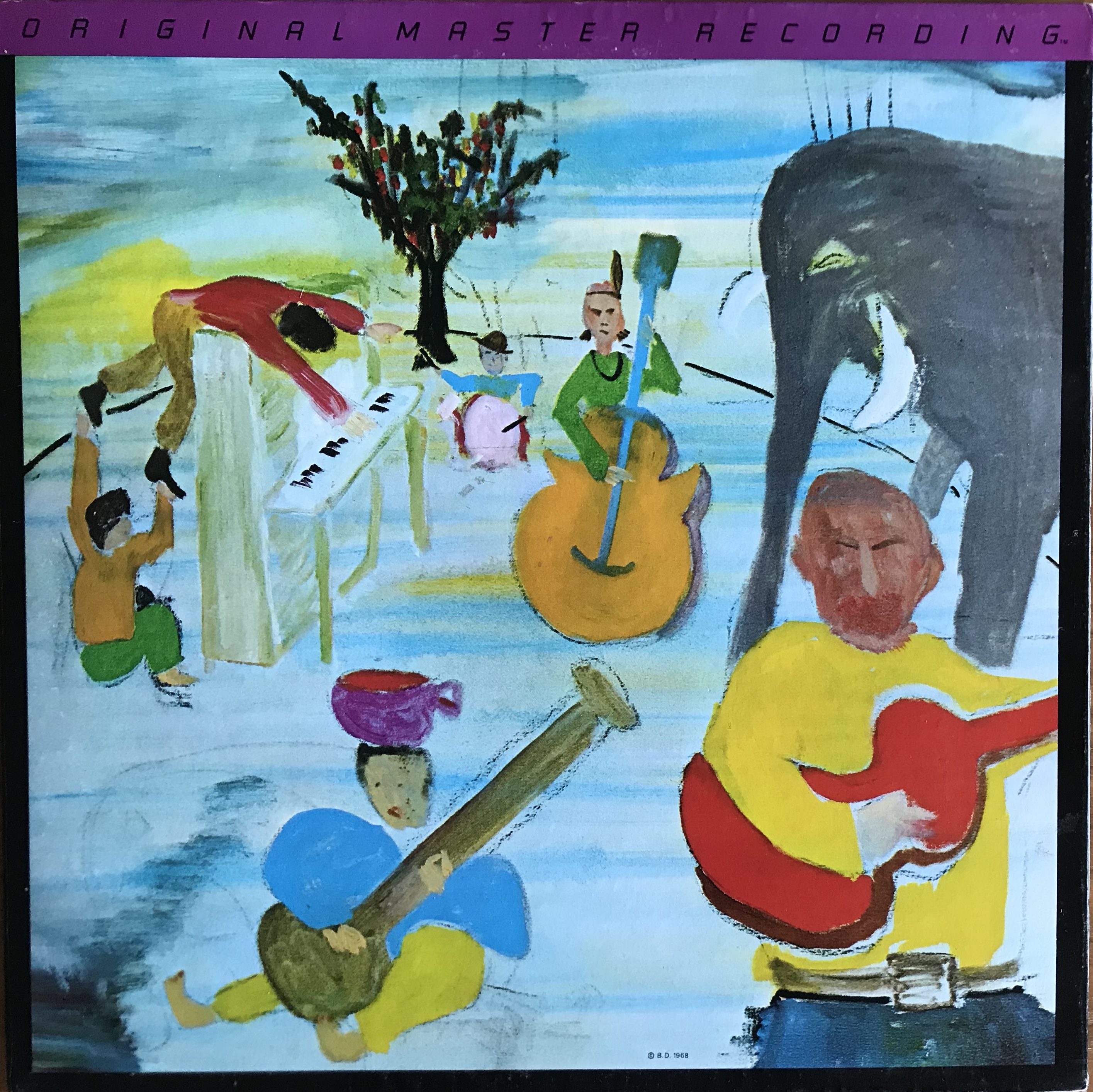My nephew is an absolute gem of a 4 year old kid that absolutely refuses to eat any non-white / beige food. He reminds me of myself as a child and the ongoing negotiation I had with my parents over eating vegetables. Is corn a vegetable? Only if it’s the only remotely vegetable-like food that a kid is willing to eat.
Once my sister and I were informed that she and I would be jointing my parents that evening in Flint, Michigan to see a movie. We didn’t have a theater in our home town of Fenton and going to the movies was always special. “What’s it called” I asked. “The Last Waltz” my dad said. “I never heard of that one Dad.” “Well, it’s something your father wants to see,” Mom chimed in.
I suspended my trepidation. After all, I loved going to the movies! Star Wars was still fresh in my 10 year old memory. Yet when we arrived at a theater that I’d never been to before and noone cueing up was younger than 25, I started to think maybe I should have lobbied for a babysitter. Little did I know that I was in for the movie / musical equivalent of being forced to eat your vegetables.
If you’re not already familiar with The Last Waltz, it’s a concert film of the The Band’s farewell performance shot by Martin Scorsese in 1976 at the Winterland Ballroom in San Francisco. To commemorate the occasion, a who’s who of great musicians that I’d never heard of or cared about in 1978 performed with The Band, including Eric Clapton, Ringo Starr, Bob Dylan, Ronnie Wood, Muddy Waters, Neil Young, Neil Diamond, Van Morrison, Bobby Charles, Dr. John, Paul Butterfield, Emmylou Harris, Ronnie Hawkins and Joni Mitchell. Some have called The Last Waltz one of the greatest concert films ever made.
The Night They Drove Old Dixie Down will forever be my personal soundtrack for the feeling of wanting desperately to lay my head down and fall asleep but finding nowhere to put it. It has taken me the better part of my adult life to get beyond the trauma of the event and listen to The Band again. Now I regularly consume a wide variety of different vegetables, but it took borrowing a MoFi reissue of Music From the Big Pink from a friend of mine to finally overcome my aversion to the group. It turns out that, just as with nearly every vegetable grown, with the right preparation I’m a fan.
To be honest, I had already acquired a copy of The Band’s second, self titled album when another friend gave me her record collection. I’d liked it, but it hadn’t immediately grabbed me. The Big Pink did. Within a few seconds of the opening track “Tears of Rage,” co-written by Richard Manual and Bob Dylan, I was pulled into to the song’s languid groove. The MoFi has a ton of bass and on this track it gives a thrilling weight to the tambourine. This was my first time hearing a MoFi reissue, and I was definitely wanting to hear more.
Audiophile listening is a double edged sword. On the one hand, I find that listening to good vinyl pressings of high quality recordings always elevates my appreciation and enthusiasm for the music. On the other hand, any “problems” with the recording, mastering or pressing that come to light make it hard to just kick back and enjoy the music. My friend’s copy of the MoFi of Music From the Big Pink is a good pressing of a great recording, but as I listened to it more, I realized it was far from perfect, and I wanted to know what a different copy would show me about this wonderful album, as well as about the MoFi.
First a word about vinyl pressings and finding good sounding copies. As I discussed in an earlier post, it’s a challenge to find a good sounding record. Certainly this is why companies like Mobile Fidelity are so popular. Mobile Fidelity Sound Labs or “MoFi” as it’s commonly known, is revered by many for its purported use of original source material, and for re-mastering it and making high quality pressings on high quality vinyl. MoFi’s records are then packed and sold in high quality inner sleeves to prevent wear and tear on the surface of the record. What’s not to like?
Meanwhile, many audiophile collectors prefer the “original” or “1st pressing” approach to sourcing their records, following the country of origin rule of course. Original pressings assure original source material that is mastered as “the artist originally intended.” These copies offer no guarantee as to the quality of the pressing or the vinyl used, and depending on the age of the record, they are generally harder find in good condition. Therefore, original pressings are a somewhat riskier proposition and are often more expensive, but they are considered by many collectors to be the best option for sound quality.
When I first started collecting, I fell into a trap of researching pressings on forums and buying a copy of one that seemed to get the most enthusiastic recommendations from other collectors. Sometimes I found bloggers that seemed to know their stuff, and I would follow their recommendations. In the end, I’d buy a copy of the version I’d zeroed in on, play it a few times and then slide it into my collection, checking that box off my list. Sometimes later, when I’d begun to better understand what a great sounding record really sounded like, I went back and revisited my earlier choices, only to discover that they hadn’t always been good ones.
Let’s face it, not many of us has the time and money (let alone patience) to acquire as many different copies of even a single title as it takes to determine which is the definitive best. I myself have not done any proper vinyl shootouts, but I have taken the time to listen to multiple copies of a number of different titles now and I can say that they all do sound very different, sometimes wildly so.
We can’t always say that getting the first pressing of a record necessarily means getting the best sounding copy because each copy of the first pressing sounds different than the others. Neither can we say that all of the reissues are inferior to the first pressings because sometimes the reissues have better mastering. I have heard reissues that destroy first pressings. I have also heard first pressings that annihilate reissues. The only way for any of us to know for sure is to listen to these records.
But once we’ve spent big bucks on a first pressing of a desirable title, how many of us want to spend even more cash on reissues to see if they are any good, or to find out if your first pressing really is the best? Not that many, I expect.
In the case of The Big Pink, I knew I would eventually have to give the MoFi back, and I was so taken with the album that I also knew I had to have my own copy. I tried a very early pressing that sounded horrible, and decided to try other reissues. At this point I liked knew the MoFi. Would a different version improve on it? I could always buy a MoFi later if it turned out I liked it better.
I decided to try out a 1978 reissue from Capital, remastered by John Lemay. Even as I’m writing this I’m not sure why I made this choice. John Lemay has remastered a number of titles for Capital over the years including, some very Beatles reissues. But I had to start somewhere.

The Capital reissue wasn’t expensive ($25) and it is in very good condition (NM). But right from the first track, I could tell something was missing, or different. This copy seemed to have less bass than the MoFi, and the tambourine didn’t have the satisfying weight that it had on the MoFi. In fact, I would say there’s a bit less weight to the instruments in general.
The other thing that was missing on the Capital was sibilance. This is a real problem with the MoFi version, and most apparent on the track “In a Station.” There’s a lot of annoying sibilance on this track. It’s not a complete deal breaker for me but it’s a definite strike against the MoFi.
As I continued to make side by side comparisons between these copies of The Big Pink, I started to notice a few other things. The bass was bigger on the MoFi, but it was also bloated. It’s an issue I often have with newer reissues on heavy vinyl. Many newer reissues have the same bloated bass that can sometimes make a good first impression because of that weight it adds to the bottom end, but upon further listening sounds flabby and hard to control. Furthermore, this bloated bass will often impose itself on the midrange, robbing the soundstage of spaciousness and clarity.
Where the mastering issues with the MoFi really stood out for me the most was on the track “Chest Fever.” There’s a moment during the intro to this track where I could hear the organ, drums, piano, guitar and vocals all muddle up together. It’s very distracting and it’s the reason that, while I don’t think this Capital reissue is in any way a perfect copy, I won’t be spending another 50 bucks to get a MoFi of The Big Pink. This song was the deal breaker for me on the MoFi. The Capital reissue handled it much better. I only wish the tambourine on “Tears of Rage” on the Capital sounded as good as it does on the MoFi.
But then again, why does the tambourine stand out the way it does on that track? It’s there on the Capital, but it’s not right up front the way it is on the MoFi. On the Capital, it sits further back in the soundstage and I could argue, sounds more in its place. I only wish it were as sink your teeth into satisfying.
Perhaps it’s the price paid for more conservative mastering – less ear candy for more cohesiveness and musicality. Whatever the case, it makes me think that what I want in a copy of The Big Pink is what the Capital version gives but with more of the liveliness and weight of the MoFi, minus the thumpiness and sibilance. That sounds like the perfect copy of this terrific record!
Update:
The Capital reissue of Music From the Big Pink made it into the queue for cleaning with the Walker Prelude system and it made all the difference on this record. If I was hesitant before to recommend it, I can now do so wholeheartedly! With the added openness and transparency that revealed itself after a new cleaning, it’s almost a totally new record, and a better one.
